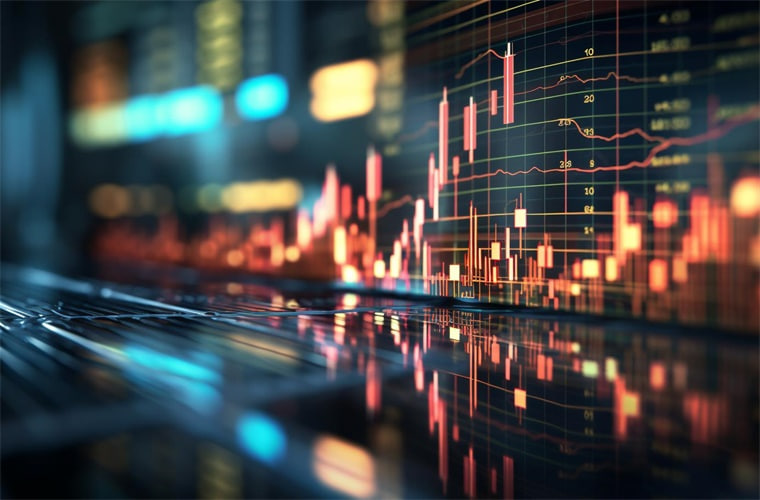Ruble's Resilience: Navigating the Storm of Sanctions and Geopolitical Uncertainty – A Deep Dive into Russia's Monetary Policy
Meta Description: This in-depth analysis explores the resilience of the Ruble amidst international sanctions and geopolitical turmoil, examining Russia's monetary policy responses, economic strategies, and the future outlook for the Russian economy. Keywords: Ruble, Russian economy, sanctions, monetary policy, geopolitical risk, financial stability, inflation, currency exchange rate, economic resilience.
Imagine this: the world watches, breath held, as a nation faces unprecedented economic pressure. Sanctions rain down, international trade screeches to a halt, and the global financial community holds its collective breath. This isn't some hypothetical scenario; it's the recent reality for Russia. Yet, against all odds, the Ruble, once predicted to plummet into oblivion, has shown remarkable resilience. How? Let's delve into the intricacies of Russia's monetary policy, its strategic maneuvers, and the complex interplay of geopolitical factors that have shaped the Ruble's surprising strength. This isn't just another dry analysis of economic data; it's a gripping narrative of economic survival, a testament to the adaptability of a nation under siege, and a fascinating case study for economists and geopolitical analysts alike. We'll unpack the strategies implemented by the Central Bank of Russia (CBR), analyze the impact of capital controls, and explore the surprising role of commodity prices in bolstering the Ruble's value. We’ll go beyond the headlines, examining the human cost and the long-term implications for the Russian economy and its citizens. Prepare to be surprised, challenged, and ultimately, informed. This isn't just about numbers; it's about the story behind the numbers – a story of resilience, adaptation, and the ever-evolving landscape of global finance. Get ready to uncover the truth behind the Ruble's remarkable journey.
Russia's Monetary Policy and the Ruble's Strength
The Central Bank of Russia (CBR) has been instrumental in the Ruble's unexpected stability. Initially, the CBR responded to the escalating geopolitical tensions and sanctions with aggressive interest rate hikes. This classic monetary policy tool aimed to curb inflation and attract foreign investment, although the effectiveness of such a measure in the context of crippling sanctions is debatable. It worked, at least temporarily in stemming the initial freefall, but the long-term effects are still unfolding. However, the CBR's actions weren't limited to interest rate adjustments. They also implemented capital controls, restricting the outflow of rubles and limiting the impact of speculative attacks on the currency. This move, while controversial among proponents of free markets, proved crucial in preventing a complete collapse.
The CBR's actions haven't been without criticism. Some economists argue that the capital controls stifle economic growth and impede the free flow of capital, hindering long-term economic development. Others point to the potential for distortions in the market and the risk of creating a shadow banking system to circumvent the restrictions. The debate is ongoing, and the long-term consequences of these policies remain to be seen. However, one can't deny their immediate success in shoring up the Ruble.
The situation is further complicated by the fact that Russia's economy is heavily reliant on the export of commodities, particularly oil and gas. The high demand for these resources, despite the sanctions, has injected significant amounts of foreign currency into the Russian economy, indirectly supporting the Ruble's value. This is a double-edged sword, however, as global energy markets are volatile, and any shift in demand could impact the Ruble's stability.
The Impact of Sanctions and Geopolitical Factors
The imposition of sweeping sanctions by Western nations has undoubtedly impacted the Russian economy. These sanctions, designed to cripple Russia's financial system and isolate it from the global economy, have had a significant impact on various sectors, leading to disruptions in supply chains, decreased foreign investment, and limitations on access to international financial markets. However, the sanctions haven't brought the Russian economy to its knees as some predicted.
Furthermore, Russia's strategic partnerships with countries outside the Western sphere have provided alternative channels for trade and financial transactions. This diversification of economic relationships has helped mitigate, at least to some extent, the impact of sanctions. However, this diversification involves risks and trade-offs, including potential for dependence on less-stable partners and potential compromises on transparency and governance.
The ongoing geopolitical uncertainty adds another layer of complexity. The conflict in Ukraine, which triggered the wave of sanctions, continues to be a major source of uncertainty for the Russian economy, influencing investor sentiment, commodity prices, and the overall economic outlook. This uncertainty makes it difficult to predict the long-term trajectory of the Ruble.
Analyzing the Ruble's Exchange Rate
Understanding the Ruble's exchange rate requires considering a multitude of factors. It's not simply a matter of supply and demand, but a complex interplay of monetary policy, geopolitical events, commodity prices, and investor sentiment. The Ruble's recent performance has been a surprise to many, defying the initial predictions of a dramatic collapse. While the Ruble has shown resilience, it's essential to remember that this stability is fragile and susceptible to shifts in global events. Long-term stability requires structural reforms and diversification away from reliance on commodity exports.
Here's a simplified breakdown of factors influencing the Ruble's exchange rate:
| Factor | Impact on Ruble |
|--------------------------|-----------------------------------------------|
| Interest Rate Changes | Higher rates generally attract investment, strengthening the Ruble; lower rates can weaken it. |
| Commodity Prices | High prices for oil and gas bolster the Ruble; low prices weaken it. |
| Geopolitical Events | Uncertainty and conflict typically weaken the Ruble. |
| Sanctions | Sanctions generally weaken the Ruble, but the impact can be surprisingly mitigated by other factors. |
| Investor Sentiment | Positive sentiment strengthens the Ruble; negative sentiment weakens it. |
Long-Term Outlook and Economic Resilience
The long-term outlook for the Ruble and the Russian economy remains uncertain. While the Ruble has shown remarkable resilience in the face of unprecedented challenges, its stability is not guaranteed. The effectiveness of the CBR's monetary policy, the impact of ongoing sanctions, and the evolution of geopolitical events will all play crucial roles in shaping the future trajectory of the Russian economy. However, the current situation highlights the importance of economic diversification, sustainable development practices, and responsible fiscal management.
Russia's ability to adapt and navigate these challenges will be crucial in determining the long-term health of its economy and the stability of its currency. The focus should shift from merely managing the immediate crisis to implementing long-term strategies that promote sustainable growth and reduce dependence on volatile commodity prices and geopolitical factors. This includes fostering innovation, investing in human capital, and promoting a more diversified and resilient economy.
Frequently Asked Questions (FAQ)
Q1: Will the Ruble continue to strengthen?
A1: It's impossible to predict with certainty. The Ruble's strength is contingent upon numerous factors, including global commodity prices, the ongoing geopolitical situation, and the continued effectiveness of the CBR's policies. While it has shown surprising resilience, its future trajectory remains uncertain.
Q2: Are the capital controls sustainable in the long run?
A2: Capital controls, while effective in the short term for stabilizing the Ruble, are generally seen as unsustainable in the long run. They can stifle economic growth, distort markets, and hinder foreign investment. The long-term aim should be to create a stable and attractive investment climate that doesn't require such stringent controls.
Q3: How has the war in Ukraine impacted the Ruble?
A3: The war has been a significant factor, triggering many of the sanctions that have impacted the Ruble. The uncertainty surrounding the conflict has also negatively affected investor confidence. However, the surprisingly high demand for Russian energy resources has partially offset the negative effects of the war.
Q4: What role do commodity prices play in the Ruble's value?
A4: Russia is a major exporter of oil and gas. Consequently, the prices of these commodities significantly influence the Ruble's exchange rate. High commodity prices generally support the Ruble, while low prices weaken it.
Q5: What are the alternatives for Russia to the Western financial system?
A5: Russia is increasingly relying on alternative financial mechanisms and partnerships with countries outside the Western sphere. This includes developing its own payment systems and strengthening trade relationships with countries like China and India. However, this diversification comes with unique challenges and risks.
Q6: What is the future of the Russian economy?
A6: The future of the Russian economy is uncertain and hinges on various factors such as the resolution of the geopolitical situation, the effectiveness of economic reforms, global commodity prices, and the ability of the Russian government to adapt to the changing global landscape. Diversification and sustainable economic development are crucial for long-term stability.
Conclusion
The Ruble's resilience in the face of unprecedented sanctions and geopolitical uncertainty is a remarkable story. However, this resilience shouldn't be mistaken for long-term stability. The future of the Ruble and the Russian economy depends on a complex interplay of factors, requiring careful navigation of economic and geopolitical challenges. The situation underscores the interconnectedness of the global economy and highlights the importance of sustainable economic practices and responsible governance. The ongoing saga of the Ruble and Russia's economy continues to be a fascinating case study for economists, policymakers, and anyone interested in the dynamics of global finance and geopolitics. The journey is far from over, and the next chapter remains unwritten.



